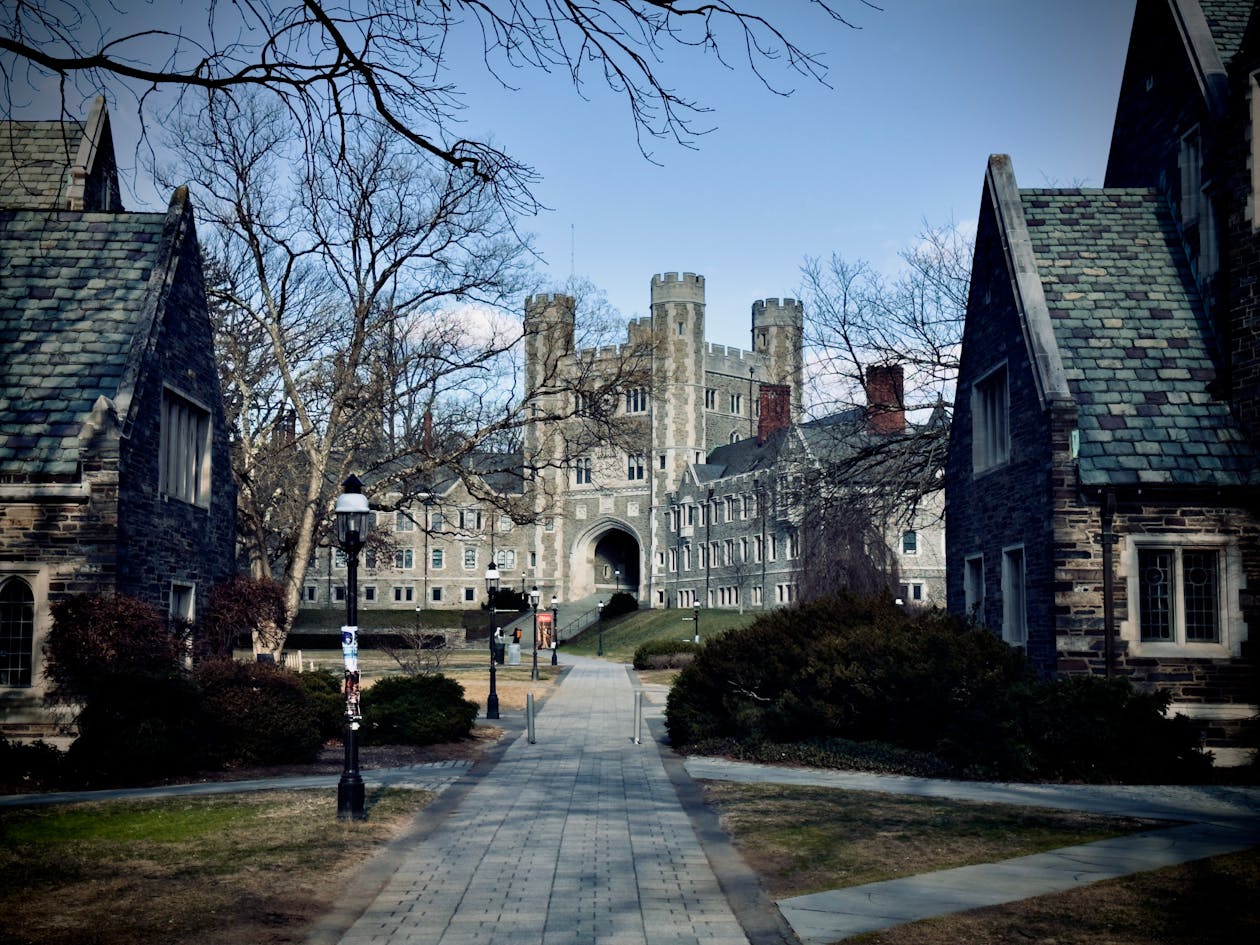Princeton Eliminates Tuition for Families Earning Up to $250K — Middle-Class Students Win Big

One Ivy League university just eliminated a barrier that has crushed American families for decades. Middle-class households drowning in calculations about second mortgages and retirement account raids received news that seemed too good to be real. Students who assumed elite education remained forever out of reach discovered doors suddenly swinging open.
August 2025 brought an announcement that sent shockwaves through higher education. A policy change at one of America’s most prestigious institutions rewrote assumptions about who can afford world-class degrees. Families earning comfortable middle-class incomes learned they qualify for something previously reserved for much lower earners.
Student debt enslaves millions of Americans who borrowed money they couldn’t afford to pursue degrees they desperately wanted. College costs exploded while wages stagnated, creating impossible choices between education and financial security. Now one university’s bold move challenges every assumption about affordability and access to elite higher education.
Ivy League School Just Made College Free for Middle-Class America
Princeton University eliminated tuition charges for families earning up to $250,000 annually starting with the fall 2025 semester. Full cost coverage extends to families making under $150,000 per year, including tuition, housing, food, books, and personal expenses. Policy takes effect immediately with incoming Class of 2029.
Financial aid expansion represents the most generous program in Ivy League history. Most undergraduate families with incomes reaching $250,000 pay nothing for tuition under new guidelines. Even households earning up to $350,000 qualify for grant assistance, particularly when multiple children attend college simultaneously.
“Through our increased investment in financial aid, we are making the transformative experience of a Princeton education more affordable for more students than ever,” Provost Jennifer Rexford announced in August press release.
Numbers reveal dramatic scope of access expansion. About two-thirds of Princeton undergraduates now qualify for some form of financial aid. Average aid packages exceed $80,000 per student annually. Among incoming freshmen, 69% receive financial assistance based on family need.
What Free Actually Means at Princeton Now

Total cost of attendance reaches approximately $91,000 per year currently at Princeton. Tuition alone accounts for $65,210 for 2025-26 academic year. Housing costs roughly $12,500 while food expenses approach $9,000. Fees, books, and personal expenses add several thousand dollars more.
Families earning under $150,000 receive grant coverage for every expense associated with attending Princeton. No loans required. No work-study obligations. Students from these households graduate completely debt-free with zero money owed to anyone.
Families earning between $150,000 and $250,000 pay nothing for tuition but may face charges for housing, meals, and other living expenses. Exact amounts depend on individual financial circumstances and family situations. Aid formulas consider factors like multiple college students and unusual expenses.
Grant aid differs completely from loans requiring repayment. Princeton provides money students never need to return. Scholarships funded by endowment returns and alumni donations cover costs without creating debt obligations that follow graduates for decades.
Income Brackets Break Down Like This
Under $150,000 income: Princeton covers everything including tuition, room, board, books, fees, and personal expenses. Families pay nothing. Students receive comprehensive support eliminating all attendance costs.
$150,000 to $250,000 income: No tuition charges apply but families may contribute toward housing, food, and other non-tuition expenses. Specific amounts vary based on detailed financial analysis of household circumstances.
Up to $350,000 income: Grant aid remains available, especially for families supporting multiple college students simultaneously. Higher earners with several children in university can receive substantial assistance reducing total education costs.
Two-thirds of all Princeton students now qualify for some financial assistance. Only the wealthiest third of families pay full sticker prices for attendance. Middle-class families who previously assumed Princeton remained financially impossible now fall within aid eligibility ranges.
Record Numbers of Low-Income Students Getting In

Class of 2029 includes 25% of students qualifying for federal Pell Grants, which target lower-income families. As Dean of Admission and Financial Aid Karen Richardson noted: “We are thrilled to welcome the Great Class of 2029 to campus. Each of the students has experienced great personal and academic success, and they are primed to bring that same energy to campus this fall.” Percentage represents highest proportion of low-income students in Princeton history. Figure jumped from 21.7% just one year earlier in Class of 2028.
Pell Grant eligibility typically indicates family incomes below $60,000 annually, though exact thresholds vary by household size and circumstances. One quarter of Princeton freshmen come from families earning modest incomes far below middle-class ranges.
Average aid package exceeds $80,000 per student annually. Amount covers vast majority of attendance costs for students receiving financial assistance. Princeton commits substantial resources to ensuring qualified students can afford attendance regardless of family wealth.
Financial aid spending for all enrolled undergraduates reaches $327 million for 2025-26 academic year. Budget increased 15.5% from previous year to accommodate expanded eligibility and growing numbers of aid recipients. Investment reflects institutional commitment to access and affordability.
How Princeton Pays for This Massive Expansion

Endowment valued at approximately $34.1 billion provides foundation for Princeton’s financial aid program. Investment returns averaged 9.2% annually over the past decade. Endowment payouts dedicated specifically to financial aid cover nearly 70% of undergraduate scholarship budget.
Alumni donations supplement endowment distributions, providing additional funding for student assistance. Sustained generosity from former students makes expanded access possible. Donor contributions demonstrate commitment to ensuring future generations can access Princeton education.
Aid spending jumps to $327 million for 2025-26 academic year from $283 million previous year. Increase represents roughly 16% growth in financial aid budget. Expansion requires substantial resources but remains sustainable given endowment size and returns.
Princeton’s massive endowment distinguishes it from most American universities. Few schools possess financial resources necessary to eliminate tuition for middle-class families. Endowment per student exceeds amounts available at nearly all other institutions, enabling uniquely generous aid policies.
Trump Tax on College Endowments Creates Pressure
New federal law imposes up to 8% tax on large university endowments starting in 2025. Princeton faces estimated $217 million tax liability next year according to American Enterprise Institute analysis. Levy targets wealthiest universities with substantial investment assets.
Expanding financial aid may reduce tax burden under new rules. Universities can lower taxes by reducing numbers of “tuition-paying” students counted under legislation. Grant aid increases potentially qualify as strategy for minimizing endowment tax liability.
Federal policy aims to pressure wealthy universities to spend endowment money on students rather than accumulating assets. Trump administration suspended dozens of Princeton research grants in April, applying political pressure on elite institutions. Tension between university autonomy and government demands continues escalating.
Other elite schools face hiring freezes and staff layoffs according to Associated Press reporting. Harvard, Yale, and Stanford implement cost-cutting measures responding to federal pressures and economic uncertainties. Princeton’s aid expansion contrasts with retrenchment elsewhere in higher education.
College Costs Exploded While Wages Stayed Flat

Princeton tuition climbed 165% since 2000 when annual cost was $24,630. Current $65,210 tuition reflects explosive growth far exceeding inflation and wage increases. Middle-class families watched college become increasingly unaffordable as prices soared.
Annual cost of $91,000 puts elite education completely out of reach for families lacking substantial wealth. Attending Princeton for four years costs over $360,000 before aid. Few families can afford such expenses from income alone without borrowing heavily.
Millions of Americans struggle with trillions in accumulated student debt. Borrowing money for college created financial burdens that prevent home purchases, delay marriages, and limit career choices. Debt crisis threatens economic mobility and opportunity for entire generations.
Affordability crisis extends far beyond Princeton to affect higher education nationwide. Public universities raised tuition dramatically as state funding declined. Regional schools cost tens of thousands annually. Even community colleges present financial barriers for low-income students.
Princeton Leads but Other Elite Schools Follow

Harvard offers free tuition for families earning under $200,000 income after expanding aid in March. Massachusetts Institute of Technology recently increased middle-income family assistance. Yale, Stanford, and other elite schools maintain generous aid programs, though specifics vary.
Cornell threshold remains lowest among Ivy League at $75,000 for full aid coverage. Penn, Columbia, Brown, and Dartmouth offer need-based aid but with different income limits and coverage levels. Princeton’s new policy establishes most generous standard in peer group.
All Ivy League schools now offer substantial need-based aid to low-income students. Competition among elite institutions drives continuous improvement in financial assistance. Schools compete for talented students by removing financial barriers to attendance.
Elite school generosity stands in sharp contrast to public university aid. State schools lack massive endowments to fund comprehensive assistance programs. Public institution students often graduate with substantial debt despite lower published tuition rates.
No Loans Since 2001 Changed Financial Aid Forever
Princeton became first university in country to eliminate loans from aid packages in 2001. Decision transformed financial aid by providing grants instead of borrowing obligations. Students could graduate debt-free rather than owing tens of thousands of dollars.
Grant-only programs mean financial assistance never requires repayment. Aid comes as scholarships funded by endowment rather than loans creating long-term obligations. Approach completely changes educational affordability for aided students.
Ninety percent of recent Princeton graduates finished with zero student debt. Loan-free aid lets students choose careers based on passion rather than salary requirements. Freedom from debt obligations provides flexibility impossible for graduates burdened with repayment schedules.
Other elite schools eventually copied Princeton’s loan-free model after observing success. Harvard, Yale, and Stanford eliminated loans from aid packages following Princeton’s leadership. Innovation spread across elite institutions, improving access nationwide.
Middle-Class Families Win Big Under New Policy
$250,000 income threshold captures upper-middle-class households in most American regions. Families earning comfortable incomes but lacking substantial wealth can now afford Princeton without devastating finances. Previous system priced out professional families unable to pay full costs.
Geographic cost-of-living differences mean policy impacts vary significantly. $250,000 income provides different purchasing power in rural areas versus expensive coastal cities. Aid formulas account for regional differences but thresholds create bright-line eligibility boundaries.
Families with multiple children in college multiply benefits under aid program. Supporting several college students simultaneously creates enormous financial strain. Princeton aid eases burdens on families facing simultaneous tuition obligations for multiple children.
Professional families earning solid incomes previously faced terrible choices between retirement savings and college funding. New policy eliminates dilemma for many middle-class households. Parents can maintain financial security while children access elite education.
What This Means for Future of American Higher Education
Pressure mounts on peer institutions to match Princeton’s generosity. Competitive dynamics among elite schools drive continuous aid expansion. Schools risk losing talented students to more generous competitors if they fail to enhance aid programs.
Public universities lack endowments to compete with elite school aid offers. State institutions cannot match Princeton’s resources despite serving far more students. Two-tier system deepens between richly-endowed elite schools and under-resourced public universities.
Model may inspire state-level policy reforms for public colleges. Princeton’s success demonstrates feasibility of dramatic aid expansion. State governments might increase funding for public university aid, replicating elite school approaches within state systems.
Access to Princeton doesn’t solve systemic higher education crisis affecting millions of students. Elite schools educate tiny fraction of American college students. Most young people attend regional public universities and community colleges lacking resources for generous aid.
Princeton’s bold action proves ambitious financial aid expansion works when resources exist. Challenge remains extending similar opportunities to students at thousands of other institutions. Fundamental transformation requires addressing funding inequities throughout American higher education system.
Loading...

